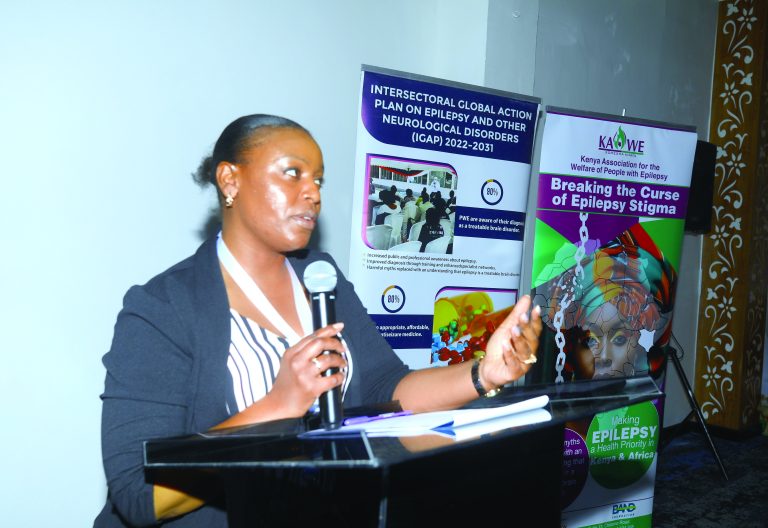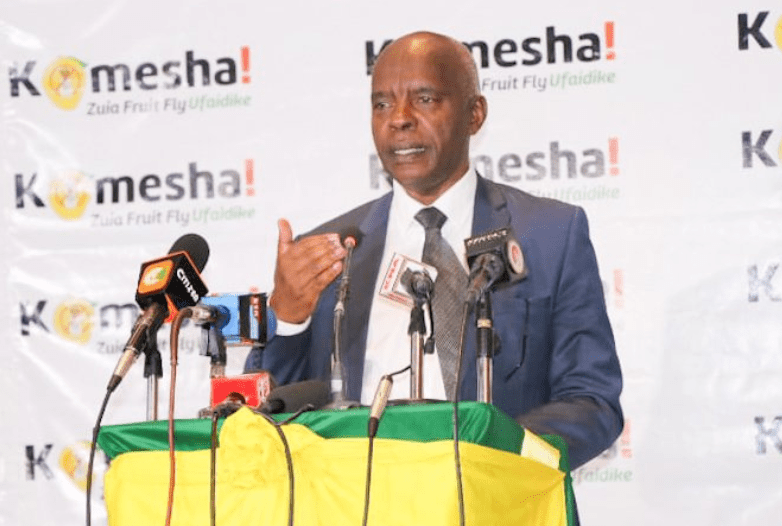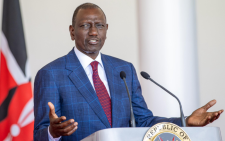Battle against misconceptions about epilepsy gains ground

Epilepsy affects an estimated 1.8 million people in Kenya, with a prevalence rate of 18.5 per 1,000, higher than the average in Africa and Latin America.
Yet, though it is relatively common, epilepsy remains shrouded in cultural misconceptions, fear, and shame.
At a workshop in Nairobi on Monday, the Kenya Association for the Welfare of People with Epilepsy (KAWE) identified stigmatisation as the biggest barrier to effective treatment, noting that many patients opt for traditional healing methods instead of modern medical care.
The stigmatisation of epilepsy in Kenya stems largely from deep-rooted myths and misinformation, highlighting the urgent need to create public awareness and support people living with the condition.
“Stigma is our biggest challenge. Many people living with epilepsy hide or end up seeking treatment in other countries because of stigma. It’s treatable. It’s manageable. And it’s cheap to manage,” said Okinyi David, Kisii County’s cancer and non-communicable diseases coordinator.
“People still believe it’s [caused by] witchcraft, while others think it’s contagious, like if you touch someone who has epilepsy, you’ll get it too. That misinformation isolates patients and pushes families into hiding.”
He emphasised that this stigma exists not only among the uninformed but also among medical practitioners. “It starts from community members, but extends up to healthcare workers, policymakers, and even leaders.”
A recent Knowledge, Attitude and Practice (KAP) survey carried out in nine sub-counties of Kisii revealed grim realities: high levels of stigma, poor inclusion, minimal policy engagement, and unreliable access to treatment. Many patients resort to traditional healers or religious centres. Others are simply hidden away.
“We’ve counted 3,200 patients in Kisii, but we know there are more. Some families even lie during surveys to avoid shame,” Okinyi said.
Financially vulnerable
The burden is even heavier for women with epilepsy, particularly those who are undereducated or financially vulnerable. “They face the most discrimination. And their voices are rarely heard in forums that affect their care,” Okinyi added.
Judith Adhiambo, deputy mental health coordinator for Nairobi County, pointed out that epilepsy is often categorised under mental health but receives less attention. “Stigma largely comes from lack of awareness,” she said.
Nairobi has been working with partners like KAWE to deliver community sensitisation through chiefs’ barazas, radio shows, and door-to-door campaigns led by community health promoters.
“These [workers] have been trained on epilepsy and tasked with identifying affected households, offering support, and encouraging clinic visits,” she said. But there are major hurdles.
“We struggle with an erratic supply of medications. Sometimes a patient comes for a refill, and there’s nothing. How do you expect them to stay on treatment?”
Another challenge is the basic training gaps among healthcare workers. Many are ill-prepared to handle epilepsy cases without bias or misinformation. Nairobi has responded with capacity-building programmes, yet more is needed.
According to Dr Catherine Wanjiku, a psychiatrist at the Ministry of Health’s division of mental health, the country is finally moving to address epilepsy as more than an afterthought.
“We used to have a disconnect on where epilepsy fell – psychiatry or neurology. But now, the division of mental health is taking responsibility,” she said.
The ministry has organised national stakeholder workshops, and although one planned session was delayed due to WHO scheduling conflicts, momentum is building.
“We’re also planning a national mental health survey, which will include epilepsy data. We’ve been relying on estimates for too long,” Wanjiku added.
What’s more compelling is the economic case for action. The Kenya Mental Health Investment Case found that every shilling invested in epilepsy care yields Sh2.50 in returns within 10 years, and Sh4.50 in 20 years. “It has the highest return-on-investment of all mental health conditions,” Wanjiku noted.
From county to national level, stakeholders are aligning their efforts to build inclusive systems, fight stigma, and equip healthcare providers to treat epilepsy with dignity and science, not superstition.
“We want to empower people with epilepsy to speak up, join policy-making spaces, and live full lives,” said Okinyi.
Highly prevalent
Jane Von Gaudecer, Associate Professor at Indiana University in the US, found that epilepsy is highly prevalent in adult and paediatric populations. Her Beacon study revealed that only 28 per cent of newly diagnosed people with epilepsy were returning for follow-up treatment.
Emily Zindoli, assistant director at the National Council for Persons with Disabilities, said the organisation regularly mobilises communities to participate in therapy sessions so that people can receive proper epilepsy diagnoses.
This is accomplished through collaborations with the Kenya Institute of Special Education, Association for the Physically Disabled of Kenya, and the Ministry of Health to achieve their objectives of identification, diagnosis, management, and treatment care.











